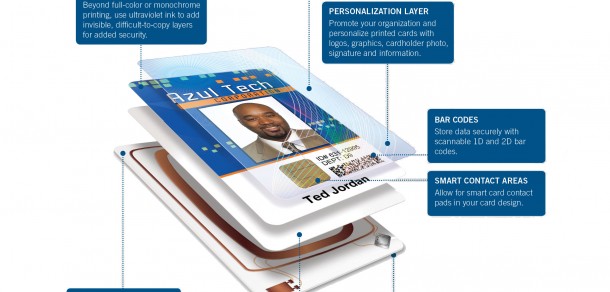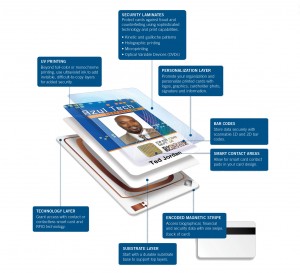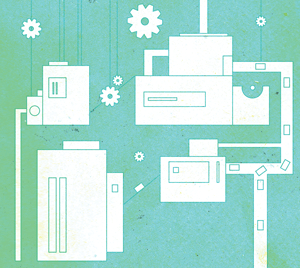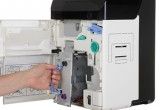Tailoring cards, peripherals and printers for your organization’s needs
22 January, 2014
category: Corporate
By Connell Smith, vice president at Datacard Group
Organizations are constantly challenged with how best to combat daily threats to protecting identities, proprietary information and equipment from falling into the wrong hands. One of the best ways to do this is to implement a secure identification program that provides credentials for everyone walking through the doors. Implementing a streamlined issuance process can guard even the most sensitive data and ultimately boost productivity and profits.
If your organization would like to implement or upgrade an ID card program, how do you get started?
Determining your business needs
The first step is to determine your needs. This will help ensure that you are selecting the best solution for the size of your organization, which is vital as needs vary from large to small organizations. Before you can really begin searching for the appropriate vendor and products, you must figure out how the ID cards will be used: visual identification, machine-readable authentication as well as physical and logical access control.
In addition, it’s important to determine how many cards you will need to print and then establish an annual quota. Will you be doing a small batch of printing, which is typically less than 1,000 cards annually, large batch printing of more than 5,000 cards annually, or somewhere in between? You will likely start with a higher volume issuance at the beginning of your program, but the number of cards printed annually may decrease if the company will only be conducting re-issues or issuing credentials to new employees.
By knowing the card’s purpose and quantity, you can begin to determine the level of sophistication needed in your overall solution.
Consider the card itself
Before choosing a system, it is important to consider the card itself. This will help determine the type of printer you will need.
Organizations should always take into consideration the following three elements when determining the card that will suit their needs:
Visual elements: Consider how you want the card to look. Visual elements include logos, photos, signatures and other items that are printed on a card. Anything printed on your ID cards will play a part into your overall brand so printing should be consistent and high quality as the cards are “mini billboards” often seen out in the community. In addition, it’s important to consider if you want one or two-side printing as well as monochrome or full-color cards. This also helps narrow down the printer you will need.
Security, durability, overlays and lamination: How long do you want to the card to last? Do you want it to last one year, five years, 10 years? Durability of the card will play a large factor in determining how long a card can last, and overlays provide varying levels of durability, abrasion resistance and chemical resistance.
Lamination is also great way to help extend the life and allows for more added security features with holographic printing, optical variable devices (OVD), microprinting, etc. This also protects cards against fraud and counterfeiting by using sophisticated technology and print capabilities.
Technology features: Consider what technologies will need to be incorporated on the card. Will there be a smart card chip, biometric data, bar code or magnetic stripe? Will there be a photo and a signature on the card? Standard card security is used with magnetic stripe encoding, and nearly all card printers can be purchased with this feature. The common uses for these include secure access along with time and attendance monitoring. Alternatively, you can upgrade a system or purchase a more robust printer that supports smart card technology to allow more advanced or detailed information to be stored directly on cards.
Selecting the right solution
With all this information in hand, you can now consider the solution that best suits your needs. An ID card program should have three key elements:
Software: Having the right software that can easily integrate with the printers you have selected will help streamline the issuance process, guard the most sensitive data, and ultimately boost productivity and profits. The software should offer powerful, user-friendly tools for card design, secure card production and flexible management of your complex integrated ID program.
Hardware: Choosing the right ID card printer that is coordinated with appropriate ID software and associated camera(s), can create a powerful impact in your card program for many years. There are various hardware options that you can choose from for your ID card programs that, depending on your needs and budget, can vary from entry-level systems to high-end systems that have the most robust technology and personalization features on the market today.
Supplies: ID card printers require various types of printer ribbons depending on your needs and the printer model you select. Each ribbon has the capacity to print a certain number of cards, so once you determine how many cards you will print annually, you will be able to calculate the number of ribbons you will need. In addition, you may need laminates and overlays for the security features on the card.
The importance of integrated platforms
Having a tightly integrated platform of hardware, software, supplies and global support from a single source – as opposed to a collection of disparate systems from various companies – can prove invaluable when shopping for your ID card program.
After the thorough evaluation of the function and business needs for your organization, a supplier can give recommendations to help narrow down the search for a complete ID card program. The following questions are crucial in selecting the right solution:
- Will the cards be printed and personalized on one side or two sides?
- Will you need full color options or monochrome (single color)?
- Do you need the cards to be embossed?
- Where do you need the data encoded (magnetic stripe, bar codes, contact or contactless chip)?
- What level of security you will need on the cards?
- What cardholder information are you looking to include on the card (photo, signature, biometrics, personal data)?
Answering these questions will help determine the ID card solution that best fits your needs from specific features on printers – such as full color printing with direct-to-card or retransfer printing, embossing, indenting and multi-hopper options, or smart card encoding – to UV and holographic security features – such as topcoats, overlays and laminates to protect against daily fraud and counterfeiting threats.
It’s important for companies to integrate technology for their identity programs that will help them protect their investment as well as grow and change with their needs. Ultimately, finding a trusted partner is key. Together you can evaluate needs and select a solution that seamlessly integrates into existing systems and can scale to ensure that your organization gets the best possible return on its investment.





